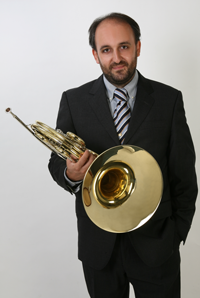 |
More than 1 Year has passed since I’ve started playing on a Schmid Horn, so the time has come to make a balance of the whole experience. |
I’ve chosen a Schmid yellowbrass double horn with a hand hammered bell without garland as my main horn. In my very first feeling, I felt this horn as being very light both for holding and playing. That’s something logical, since its 2 kilograms and 100 grams give the player a feeling somewhat between a single and a double horn (since most double horn have 2,5kg)
Concerning to the balance on different ranges, I liked specially that since the beginning, even in the low range, the horn presented a very easy response, something that isn’t very common in some new horns.
Something that impressed me a lot was the fact of being able to reduce the embouchure shifts in the medium low range, being able to play a good forte without any shift, and now, by using this horn, I only need to change the angle on extreme dynamics. I’m playing also on a Schmid Digital mouthpiece, so this change in my playing could be because of the combination between the mouthpiece and the horn. In the digital version of his mouthpieces, Mr. Schmid uses a digital model, on the contrary to the traditional process where a physical model is used. This way, is possible to design more precise mouthpieces. The Schmid digital mouthpieces have an other interesting feature: they are very thin and light, and the fact of not having much mass, they apear to be smaller, because the outer appearance of mouthpiece is the same as the inside. This lack of mass, allows the horn player to add mass weights (megatons, dounughts etc.) if needed, because yo can always add mass but not take it! Mr. Schmid’s opinion on this is that these weights on the mouthpiece are only useful to correct a construction problem on the instrument, and If you feel you need to add extra mass, you should add it in the opposite extreme of the horn, that means on the bell and not on the mouthpiece.
Usually horn players say as a joke that the “tuning is on the mark”, on the Schmid horns the tuning is really on the mark, since the main slides present small tuning marks, indicating the tuning balance between the F and Bb side of the horn. There’s one mark too on a telescopic slide, allowing the instrument to be tuned half step lower (A/E). In the same way the instrument can be tuned half step higher (B/F#) by removing part of the telescopic slide. This tool can be useful to help on tricky transpositions, however I haven’t used yet. This allows for example to play Horn in E using horn in F or Horn in Eb fingerings, or playing Horn in C os Bb sounding horn in B natural! Something is sure, there are no tuning problems motivated by a too short tuning slide! I’ve noticed that while putting the horn on a different tuning, some notes become out of tune (too low As and Ds for example)… then I figure out I was lowering and raising notes already in tune. I wasn’t lowering notes depending on the harmonic but depending on the sounds. Automatically and unconsciously due to the habit, I was lowering the note “A” but by being played using 2•3 fingerings become to low. So, using this tool requires some practice, breaking old habits and getting tuning flexibility.
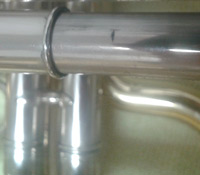
The Schmid keys are really really fast, moving only 8mm, however at first approach they seem heavy! Then I realised that, by being accustomed to keys moving a greater distance, my fingers were trying to keep pushing harder then needed. I’ve customised the keys using silver coins, giving the fingers more comfort and adherence, like I’ve done before with an Alexander 403s.
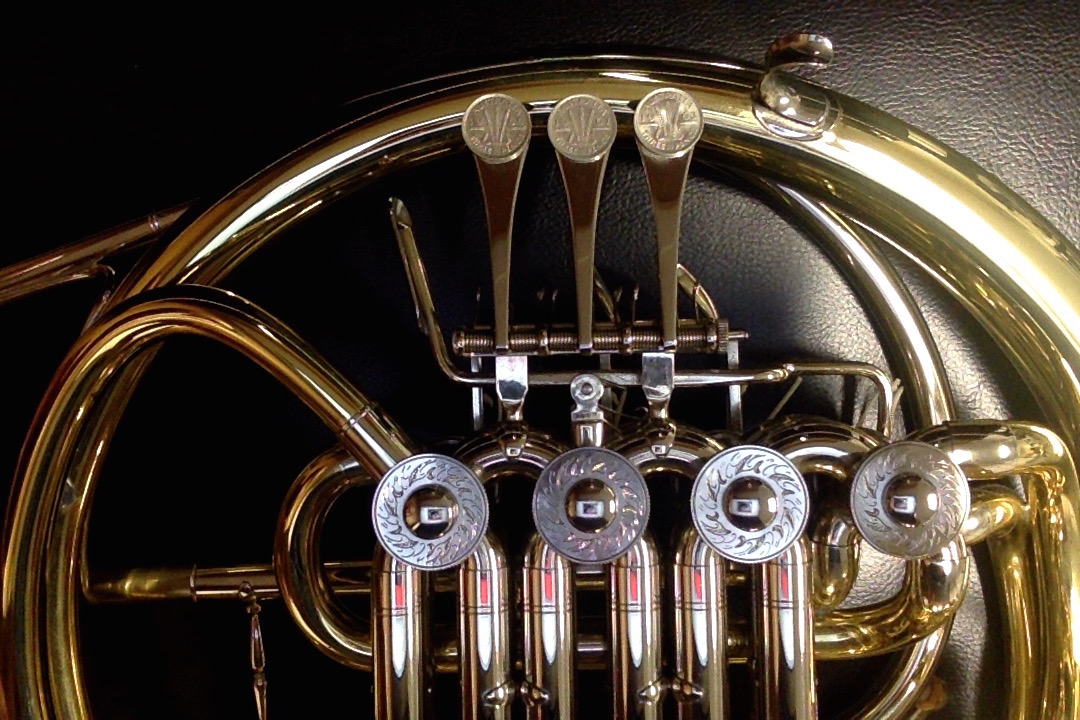
Relating to the horn wrap, Schmid horn’s are Geyer style horns, having the F/Bb rotor located in the opposite side of the mouthpiece. The kind of rotor placement results on air flowing forwards on the F side of the horn and backwards on the Bb side of the horn. The long leadpipe also gives the horn a nice and warm sound in the F side.
I’ve opted to include 2 water keys (by the leadpipe and by F side of the horn), but most of the time I’m emptying the water by rotating the horn twice towards the bell. Emptying the water and removing the main slide on a Schmid horn requires some time to get used to. By having a telescopic main slide, initially I’ve noticed that while removing the main slide, without noticing I was moving also the first part of the slide, becoming to low. I’ve solved this question by using different density lubricants, allowing to move only part of the slide.
Also on the individual slides some time to get used to was required, since these slides have the same tube length on the F side of the horn, but different tube lengths on the 1st and 2nd rotor’s slides of the B flat side of the horn. The 1st rotor’s slide of the horn is much longer and the 2nd rotor’s slide is shorter on the B flat side of the horn. Specially the 2nd rotor’s slide, requires to tilt the horn in order to properly see the back side, because it fits slightly deeper and lacks the extension commonly seen on Alexander horns. It is only a matter of getting used to!
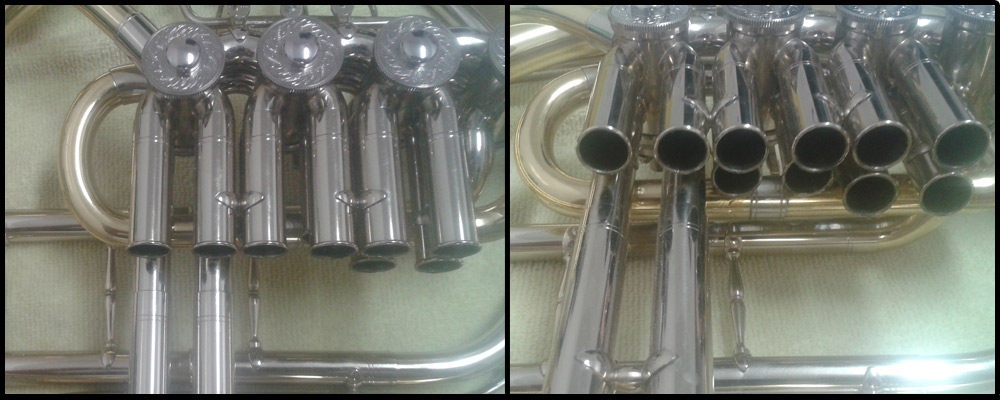
Schmid rotors have small holes on the front that allow oil to easily penetrate and in the back there ir plenty space to oil the rotors and not the silicones!
Relating to the bell, I’ve chosen a hand hammered bel without garland but I plan to try different bells later to better fit into different kinds of music. In this aspect, Schmid bells are winners because they allow much customisation, including 4 brass alloys, 3 different sizes, with or with our rim, and spun or hand hammered. The bell I’ve chosen has only on sensitive point, because is very thin and fragile, Mr. Schmid advisees people not to hold the horn by the bell.
I’ve noticed only one bad aspect on this horn, since some black spots appeared in several places (bell and other places too) only a few months after buying the horn. I’ve spoked personally with Mr. Schmid that advised me, to gently perforate the lacker with a knife, and the would prevent the black spots from growing any further. The spots stopped growing, however I think this is not acceptable in a high quality instrument, specially by appearing only a months after. I’ve noticed also a strange thing since the screw that holds the rotor arm has iron, this was proved by using a neodymium magnet. No other component on this horn showed the presence of iron, the only question that time will answerer is will the screw oxidate?
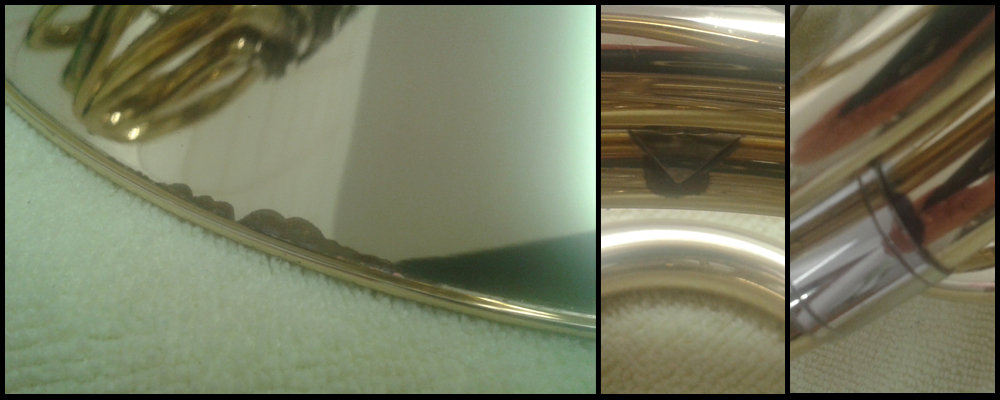
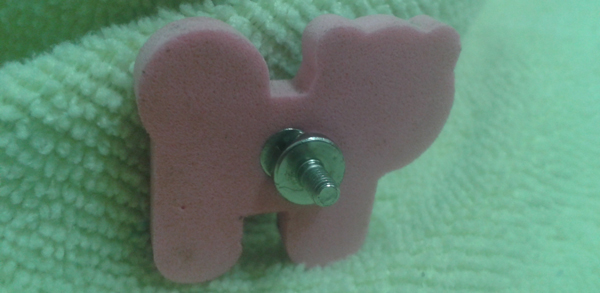
Generally speaking I’m very happy, it is probably the best horns I’ve played. When you read Mr. Schmid’s descriptions, it might seem exaggerated the way he refers to his instruments as being different. It is clear that any horn maker will say their instrument are better than his rivals. But in fact, I must say Mr. Schmid is right, since he carefully designed and build his instruments based on the “Geyer” tradition, but with several innovations, becoming instruments that raise the horn player performance, not compromising it like happens with most horns. The horn will be always a difficult instrument to play, probably “a beast impossible to domesticate”, however Schmid horns were meticulously built to make the horn player live easier, so that the focus only on the music and not in the equipment he is using.
Ricardo Matosinhos
